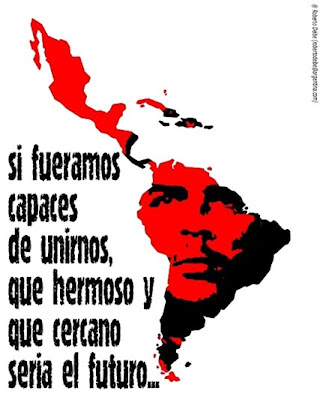Sur o no Sur- Kevin Johansen
South or not South
(Sur
o no Sur)
Music
and Lyrics by Kevin Johansen
o
beast or not to beast, that is the question (bone).
(Chicken
pox Mamá, it is contagious!)
I’m
gone because here it cannot be
I’m
back because there is the same
I’m
gone because here someone owes me
I’m
back because there, they are crazy
South
or not south
I
am gone because I don’t make enough here
I
am back because there is no hope
I
am gone because here they take advantage
I
am back because they are dumping me there
South
or not south
Excuse
me, the Italian embassy?
I
don’t know what is wrong with me
Maybe
is I am aging
I
would like to stay here, at home
But
I don´t know where is home
Sur...
South…
(A
babor!)
I
don’t know what is wrong with me, maybe is my childhood
I
would like to stay here, at home, But I don´t know where is home
anymore
I
am gone to the embassy, I am back because I have no visa
I
am gone because I am from here, I am back because I am a sudaca (from
South America)
Malaya,
what a sad fate, be or not to be an Argeline
Malaya,
what a sad fate, be or not to be a Marraschino…
Immigration problems in Latin America
The key political and social context behind the song Sur o no Sur is immigration. Sur o no Sur is basically stating to go or not to go. Latin American economy and social constructs drive people to want to search for something better, a way out of the low quality of life that they are living. The story told by Johansen is of the difficult task of thinking about immigrating, and actually immigrating. Additionally he addresses the issue of national identity, which in most cases immigrants when reaching the "american dream" with their families are propense to loosing their identity as Latin American by assuming the American identity. An important problem in Latin America is extreme poverty and difficulty finding a good job that can sustain a family and allow them to reach a good quality of life. This is reflected in one of the verses from the song where Johansen says “I am gone because I don’t make enough here”, One of the main reasons in Latin America is poverty, a hope to live “the american dream” as it has been known for many years now. Furthermore, Kevin also addresses the negative side of the American dream, “I am back because there is no hope”. Many people that make it to the U.S. specially with out proper paperwork find the shinny dream far fetched and difficult to grasp. Work is hard to find and life is not easy in a unknown place with little or no support. Furthermore, “I am gone because here they take advantage” refers in my opinion to the corruption in southern countries. Some lower classes are suppressed by the rich and powerful people of their respective countries. On the other hand Most people that return to Latin America, from the U.S. or Canada are forced to leave and are deported, this is referenced in the verse “I am back because they are dumping me there”.
This song is important for Latin American people because it describes a common success in most peoples everyday life. Many people choose to risk their lives in order to have a chance to reaching a better life and living conditions for themselves and their families. This song is important for all lower middle class and and those who live in extreme poverty, these social groups are the most propense to turn to immigration to better their life conditions. Additionally, the representation of this deep social issue in a mainstream song as Johansen has done helps to exteriorize these issues to the rest of the world.
In this song Johansen includes not only the political and social situations of the poorer Latin Americans, but also instils his own migration history during his childhood. "I don’t know what is wrong with me, maybe is my childhood I would like to stay here, at home, But I don´t know where is home anymore" in this verse of the song, he references his childhood, and demonstrates an unknowing state of where he belongs. The route of him not knowing where home is connected to the migration of his family moving from San Francisco to Buenos Aires when he was only 12 years old. Sur o no Sur, to go south or not go south. The emotion conveyed to me through this song was confusion.
The song transmits very interesting and important issues in Latin America. The double meaning of many of the things that Johansen sings for example “sur o no sur” which is taken from to be or not to be from Hamlet by William Shakespeare, along with the images used in his video to deliver the intended message with out being to blunt. Sur o no Sur, is very straight forward when listened to in the original language (Spanish). There are underlying messages that the composer wants people to understand with out directly saying them, which could be even more politically controversial. In the video of the song posted above, Johansen shows people leaving for the border of Utopia and then coming back when things are seen clearly and discover that it is not Utopia. He also shows people leaving in indigenous attire and coming back in suits.





























